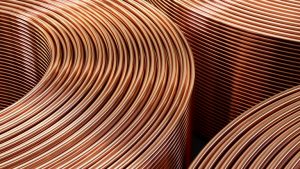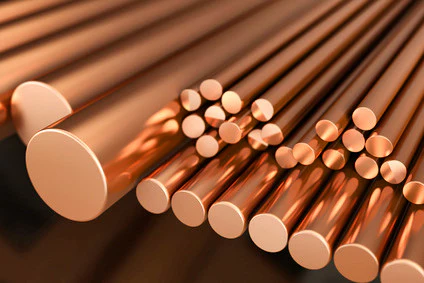Table of Contents
ToggleIntroduction
Industries such as construction, electrical wiring, and telecommunications rely on copper wire. There is high conductivity along with durable and corrosion-resistant properties that make copper wire to be selected for many different usages. Only in places like homes or industries—wires tend to have price changes often. Copper Wire Price History shows how these fluctuations occur over time.
The main factors that affect the pricing range from global economic conditions, industrial demand, and geopolitical events. Other factors also include mining production, trade policies, and technological advancement.
The Importance of Copper Wire in Various Industries
Copper wire is most often used for electrical engineering, construction, and manufacturing. Its superb conductivity, durability, and resistance to corrosion make copper wire a very important aspect for averting many applications. But copper wire prices have never had a constant pattern. Copper wire charges have been affected by a myriad of worldwide factors to date.
Historical Copper Wire Rates
Examining price records in copper wires reveals how world events and market trends influence the price of copper wires. Significant price changes over recent decades are highlighted in the following table:
| Year | Average Price per Pound (USD) | Key Influences |
| 2000 | $0.75 | Economic stability, moderate demand |
| 2008 | $3.50 | Financial crisis, supply shortages |
| 2011 | $4.50 | Peak demand, mining restrictions |
| 2016 | $2.00 | Market correction, decreased demand |
| 2020 | $2.60 | COVID-19 impact, economic downturn |
| 2023 | $4.00 | Supply chain issues, high demand |
Major Factors Influencing Copper Wire Price history
Supply and Demand Dynamics
Copper wire prices are most directly affected by supply-demand equilibrium. When industries such as construction and electronics exhibit high demand, prices tend to rise. In contrast, when downturns in the economy lead to decreased demand, prices tend to decrease.
Economic Conditions
Copper Wire Price History shows that recessions and booms strongly influence the price of copper wire. A prosperous economy increases infrastructure projects, thereby driving demand and price upwards. Recessions, however, cause demand to decrease, bringing down prices.
Mining and Production Costs
But copper comes from underground, so the price of cable made out of copper wire can be directly influenced by mining costs. Different factors, such as labor costs, regulatory requirements for mining, and technological advancements, have a role to play with that final cost.
Global Trade Policies and Tariffs
Copper wire costs are directly affected by trade restrictions and tariffs. Take, for instance, if a country imposes heavy tariffs on copper imports, then the prices within that country may rise due to reduced competition as well as limited supply.
Fluctuations in Copper Wire Prices Over Time
- Copper prices have fluctuated due to economic and industrial factors.
- The 2008 financial crisis led to a sharp decline in prices.
- In 2011, prices hit record highs due to supply shortages and rising demand.
- A slowdown in global manufacturing caused a dip in 2016.
- Post-2020 recovery drove prices up as industries rebounded.
Copper Wire Market Analysis
Analyzing market trends helps predict future price movements. Experts look at factors such as:
Industrial Growth
The demand for copper wires is driven by rapid urbanization and large infrastructure projects. Meanwhile, construction, power generation, and telecommunications are examples of industries with price impacts that keep changing.
Technological Advancements
New electrical products, such as energy-efficient appliances and renewable energy systems, affect the use of copper. The branching innovations in electric vehicles (EVs) and smart grids also impose considerable impact with respect to demands.
Raw Material Availability
Mining production and ore quality of copper have an immediate effect on supply levels. Disruptions in major mining areas, including periods of strikes, new environmental regulations, or geopolitical tensions, can trigger price surges.
Copper Wire Cost Over Time: A Comparative Analysis

- Early 2000s saw stable, low prices with balanced supply and demand.
- Mid-2000s to 2010s experienced a sharp rise due to global demand growth.
- From 2015 to 2020, prices fluctuated but remained moderate.
- Post-2020 recovery led to higher prices driven by strong demand.
Scrap Copper in Australia: A Profitable Market
Australia’s importance in the copper market is quite distinctive. The country runs a relatively strong recycling industry that collects scrap copper and sells it again. Prices for scrap copper in Australia are determined not only by international rates of copper but also by domestic demand and the specific government regulations regarding recycling. Copper Wire Price History plays a key role in understanding these price fluctuations.
Conclusion
The significance of historical progression is significant for businesses, consumers, and investors alike. Supply and demand, as well as the condition of economies, change, and global policy produces or influences these price changes. The future can be hazy, yet past trends serve as barometers for possible market movement.
FAQs
What causes such volatility in copper wire price history?
Due to variations in the supply-demand scenario, economic situation, cost of mining, and policies on global trade, copper wire prices tend to fluctuate.
Copper is said to be an attractive investment. Comment.
Copper is a desirable commodity in high demand, yet because they are highly volatile, investments must be approached cautiously and intelligently.
How does that price mechanism for scrap copper work in Australia?
Prices for scrap copper in Australia derive primarily from international copper rates, recycled industries’ demand, and the local trends in the marketplace.
What was the highest price for copper wire price history?
In 2011, copper prices did hit heights as high as $4.50 per pound, caused by great demand and shortage.
Will copper wire pricing increase in the future?
As foreseen, the demand for renewable energy, electric vehicles, and technological innovations would increase the values.

